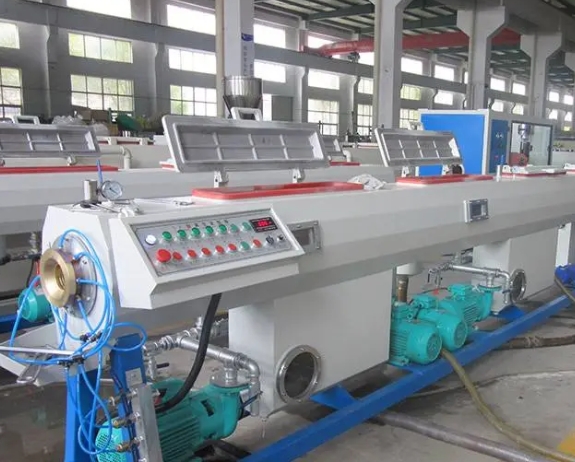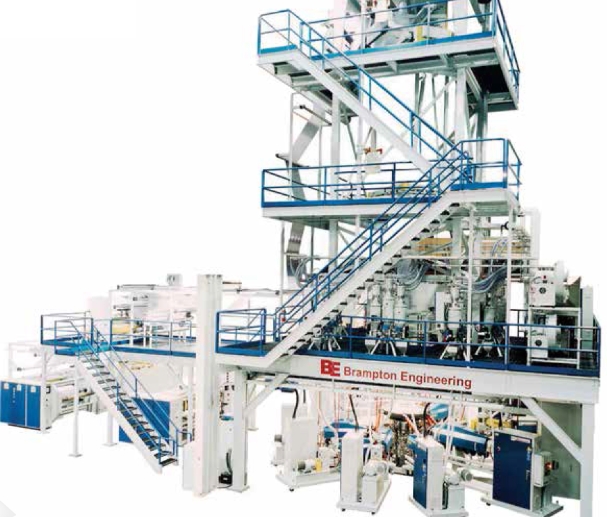Content Menu
● Introduction to Extrusion Process Tooling and Equipment
● Key Components of Extrusion Equipment
>> Feed Hopper
>> Barrel and Screw(s)
>> Heating and Cooling Systems
>> Die
>> Downstream Equipment
● Types of Extrusion Tooling
>> 1. Dies
>> 2. Mandrels
>> 3. Dummy Blocks
>> 4. Stems and Ram/Plunger
>> 5. Containers and Liners
>> 6. Bolsters, Backers, and Die Rings
>> 7. Specialized Form Tools
● Tool Materials and Their Importance
>> Tool Steel Selection
>> Common Tool Steels
● Specialized Tooling for Different Extrusion Applications
>> Plastic Extrusion
>> Metal Extrusion
>> Ceramic and Food Extrusion
● Advances in Extrusion Process Tooling and Equipment
● Maintenance and Longevity of Extrusion Tooling
● Conclusion
● FAQ
>> 1. What are the main types of dies used in the extrusion process?
>> 2. How do single-screw and twin-screw extruders differ in extrusion process tooling and equipment?
>> 3. What materials are commonly used for extrusion process tooling and equipment?
>> 4. What is the role of mandrels in extrusion tooling?
>> 5. How does maintenance impact the performance of extrusion process tooling and equipment?
● Citations:
The extrusion process is a cornerstone of modern manufacturing, enabling the creation of complex profiles and shapes from a wide range of materials, including plastics, metals, and ceramics. At the heart of this process lies a sophisticated array of tooling and equipment, each meticulously engineered to ensure efficiency, precision, and durability. This article provides a comprehensive exploration of the different types of tooling used in the extrusion process, delving into their functions, materials, and the critical role they play in shaping the final product.

Introduction to Extrusion Process Tooling and Equipment
Extrusion is a continuous manufacturing process where raw material is forced through a die to create objects of a fixed cross-sectional profile. The success of this process depends heavily on the quality and design of the extrusion process tooling and equipment. These tools not only shape the material but also withstand extreme pressures, temperatures, and repetitive use, making their selection and maintenance crucial for operational efficiency and product quality[1][3][6].
Key Components of Extrusion Equipment
Feed Hopper
The feed hopper serves as the entry point for raw materials, ensuring a steady and controlled flow into the extruder. Its design can include metering devices and agitators to prevent clumping and maintain consistency[5][6].
Barrel and Screw(s)
- Barrel: Houses the screw(s) and provides the primary chamber for melting, mixing, and conveying the material.
- Screw(s): The core component responsible for transporting, compressing, and melting the material. The geometry and configuration of the screw(s) are tailored to specific materials and applications[3][6].
Heating and Cooling Systems
Integrated heating elements (electric or steam) and cooling systems regulate the temperature within the barrel, ensuring optimal material processing[3][6].
Die
The die is the critical shaping tool at the end of the barrel. Its design determines the cross-sectional profile of the extruded product and must be precisely engineered for each application[3][6][7].
Downstream Equipment
After extrusion, downstream equipment such as pelletizers, cooling tanks, and cutters refine and finalize the product, ensuring it meets desired specifications[5].
Types of Extrusion Tooling
Extrusion process tooling and equipment can be categorized based on the type of material processed, the method of extrusion, and the desired end product.
1. Dies
Dies are the most essential tooling component in the extrusion process. They define the shape and dimensions of the final product. There are several types of dies:
- Solid Dies: Used for creating solid profiles.
- Hollow Dies: Incorporate mandrels to form internal cavities, such as tubes and pipes.
- Spider, Porthole, and Bridge Dies: Designed for complex hollow profiles, these dies use internal supports (legs) to hold the mandrel and allow material to flow around them, merging downstream to form the final shape[2][7][8].
- Sheet Dies: Flat dies used for producing continuous sheets or films, common in plastic extrusion[4][7].
- Tubing and Jacketing Dies: Specialized for creating pipes, tubes, and cable jacketing[4][7].
- Blown Film Dies: Annular dies used in the blown film extrusion process to create thin plastic films[4][7].
2. Mandrels
Mandrels are used in conjunction with hollow dies to form internal cavities. There are two main types:
- Fixed Mandrels: Integrated into the dummy block and stem, providing a stationary support for the billet[2].
- Floating Mandrels: Supported by the die and allowed to self-align during extrusion, suitable for certain hollow profiles[2].
3. Dummy Blocks
Dummy blocks are placed between the ram and the billet, protecting the ram from direct contact with the hot billet and ensuring even pressure distribution. Exchangeable dummy blocks are common in both direct and indirect extrusion processes[1][8].
4. Stems and Ram/Plunger
The stem connects the ram or plunger to the dummy block, transmitting force to push the billet through the die. The ram or plunger itself is a key part of the press, especially in metal and ceramic extrusion[1][5][8].
5. Containers and Liners
The container holds the billet during extrusion, while the liner protects the container from wear and thermal damage. These components are subjected to high temperatures and pressures, requiring robust materials and precise engineering[1][8].
6. Bolsters, Backers, and Die Rings
These support structures provide stability and strength to the die assembly, preventing deformation under pressure and ensuring accurate extrusion[1][8].
7. Specialized Form Tools
- Cold Forming Dies: Used in metal extrusion for precise axial forms, such as splines and serrations[7].
- Stretch Forming Dies: Employed in aerospace and automotive industries to bend extruded profiles into complex shapes[7].

Tool Materials and Their Importance
The choice of materials for extrusion process tooling and equipment is critical due to the demanding operating conditions.
Tool Steel Selection
Hot work tool steels are commonly used for manufacturing dies, mandrels, dummy blocks, and other critical components. The selection depends on:
- Operating Temperature: Different alloys are suited for aluminum, copper, or steel extrusion, each with specific temperature ranges[1].
- Wear Resistance: High hardness and toughness are required to withstand abrasion and thermal cycling.
- Surface Treatments: Nitriding and nitrocarburizing increase surface hardness and extend tool life, especially for dies[1].
Common Tool Steels
- Uddeholm Orvar 2 Microdized
- Uddeholm Vidar 1
- Uddeholm QRO 90 Supreme
- Uddeholm Dievar
Each of these steels offers unique properties tailored to specific extrusion applications, balancing hot strength, toughness, and wear resistance[1].
Specialized Tooling for Different Extrusion Applications
Plastic Extrusion
- Single-Screw Extruders: Ideal for simple profiles and standard plastic products.
- Twin-Screw Extruders: Provide enhanced mixing and are used for complex formulations, color mixing, and high-throughput applications[4][5][7].
- Sheet, Tubing, and Blown Film Dies: Tailored to the specific product being manufactured, such as sheets, pipes, or films[4][7].
Metal Extrusion
- Ram or Plunger Extruders: Used for high-strength materials like steel, copper, and aluminum.
- Cold Forming Dies: Enable the creation of precise, complex geometries in metal parts[7].
Ceramic and Food Extrusion
- Twin-Screw and Roller Die Extruders: Used for mixing and shaping materials with unique processing requirements, such as ceramics or food products[5].
Advances in Extrusion Process Tooling and Equipment
Modern extrusion process tooling and equipment have evolved to incorporate automation, advanced materials, and precision engineering:
- Automated Form Tools: Increase efficiency and consistency, reducing manual intervention and waste[7].
- Customizable Tooling: Allows for rapid changeovers and adaptation to new product designs.
- Integrated Monitoring Systems: Enhance process control, ensuring optimal tool performance and product quality.
Maintenance and Longevity of Extrusion Tooling
Proper maintenance is essential to maximize the lifespan and performance of extrusion process tooling and equipment:
- Regular Inspection: Identifies wear, cracking, or deformation before failure occurs.
- Surface Treatments: Periodic re-nitriding or recoating can restore surface hardness and wear resistance[1].
- Replacement Schedules: Critical components like dies, dummy blocks, and liners should be replaced according to usage and wear patterns to prevent unplanned downtime[1][8].
Conclusion
Extrusion process tooling and equipment form the backbone of efficient, high-quality manufacturing across industries. From the fundamental dies and mandrels to advanced automated form tools, each component plays a vital role in shaping, supporting, and refining the final product. The careful selection of tool materials, precise engineering, and diligent maintenance are essential for maximizing productivity and ensuring consistent results. As technology advances, the extrusion process continues to evolve, offering greater flexibility, efficiency, and product complexity than ever before.

FAQ
1. What are the main types of dies used in the extrusion process?
There are several main types of dies, including solid dies for simple profiles, hollow dies with mandrels for tubes and pipes, spider/porthole/bridge dies for complex hollow shapes, sheet dies for films and sheets, and blown film dies for thin plastic films[2][4][7].
2. How do single-screw and twin-screw extruders differ in extrusion process tooling and equipment?
Single-screw extruders are ideal for straightforward extrusion of plastics and are widely used for products like pipes and sheets. Twin-screw extruders offer enhanced mixing and processing capabilities, making them suitable for complex formulations, color mixing, and high-throughput applications[4][5][7].
3. What materials are commonly used for extrusion process tooling and equipment?
Hot work tool steels such as Uddeholm Orvar 2 Microdized, Vidar 1, QRO 90 Supreme, and Dievar are commonly used. These materials offer high hot strength, toughness, and wear resistance, and are often surface-treated for extended life[1].
4. What is the role of mandrels in extrusion tooling?
Mandrels are used to form internal cavities in hollow extrusions. Fixed mandrels are integrated into the dummy block and stem, while floating mandrels align themselves during extrusion. Both types are critical for producing tubes and other hollow profiles[2].
5. How does maintenance impact the performance of extrusion process tooling and equipment?
Regular inspection, timely replacement of worn components, and surface treatments like nitriding are essential for maintaining tool performance and longevity. Proper maintenance minimizes downtime and ensures consistent product quality[1][8].
Citations:
[1] https://www.uddeholm.com/app/uploads/sites/240/2024/05/Tech-Uddeholm-Extrusion-EN-2.pdf
[2] https://en.wikipedia.org/wiki/Extrusion
[3] https://www.macocorporation.com/blog/extruder-machine/
[4] https://plasticextrusiontech.net/machines-used-in-the-plastic-extrusion-process/
[5] https://jieyatwinscrew.com/blog/exploring-extrusion-equipment/
[6] https://engitech.in/extrusion-machines-and-extruders-guide/
[7] https://www.yjing-extrusion.com/what-are-the-different-types-of-form-tools-for-extrusion-machines.html
[8] https://geminigroup.net/understanding-aluminum-extrusion-dies/
[9] https://www.conairgroup.com/resources/resource/what-are-the-three-primary-types-of-sizing-tooling-for-extruded-tube-and-pipe/
[10] https://www.ptonline.com/articles/how-to-select-the-right-tooling-for-pipe-extrusion
[11] https://www.twi-global.com/technical-knowledge/faqs/plastic-extrusion
[12] https://www.globalspec.com/learnmore/manufacturing_process_equipment/manufacturing_equipment_components/extrusion_machines
[13] https://paulmurphyplastics.com/industry-news-blog/understanding-extrusion-process/
[14] https://www.lightmetalage.com/news/industry-news/extrusion/material-selection-for-extrusion-tooling/
[15] https://www.conairgroup.com/resources/resource/extrusion-processing-basic-guide-to-auxiliary-equipment/
[16] https://www.bwcprofiles.co.uk/extrusion-academy/a-comprehensive-guide-to-the-process-importance-of-extrusion-tool-making
[17] http://www.industrialextrusionmachinery.com/plastic_extrusion_overjacketing_and_tubing_extrusion.html
[18] https://omnexus.specialchem.com/selection-guide/an-in-depth-look-at-extrusion
[19] https://www.fictiv.com/articles/plastic-extrusion-explained
[20] https://paretoplastic.com/plastic-extrusion-design-tooling-guide/






















